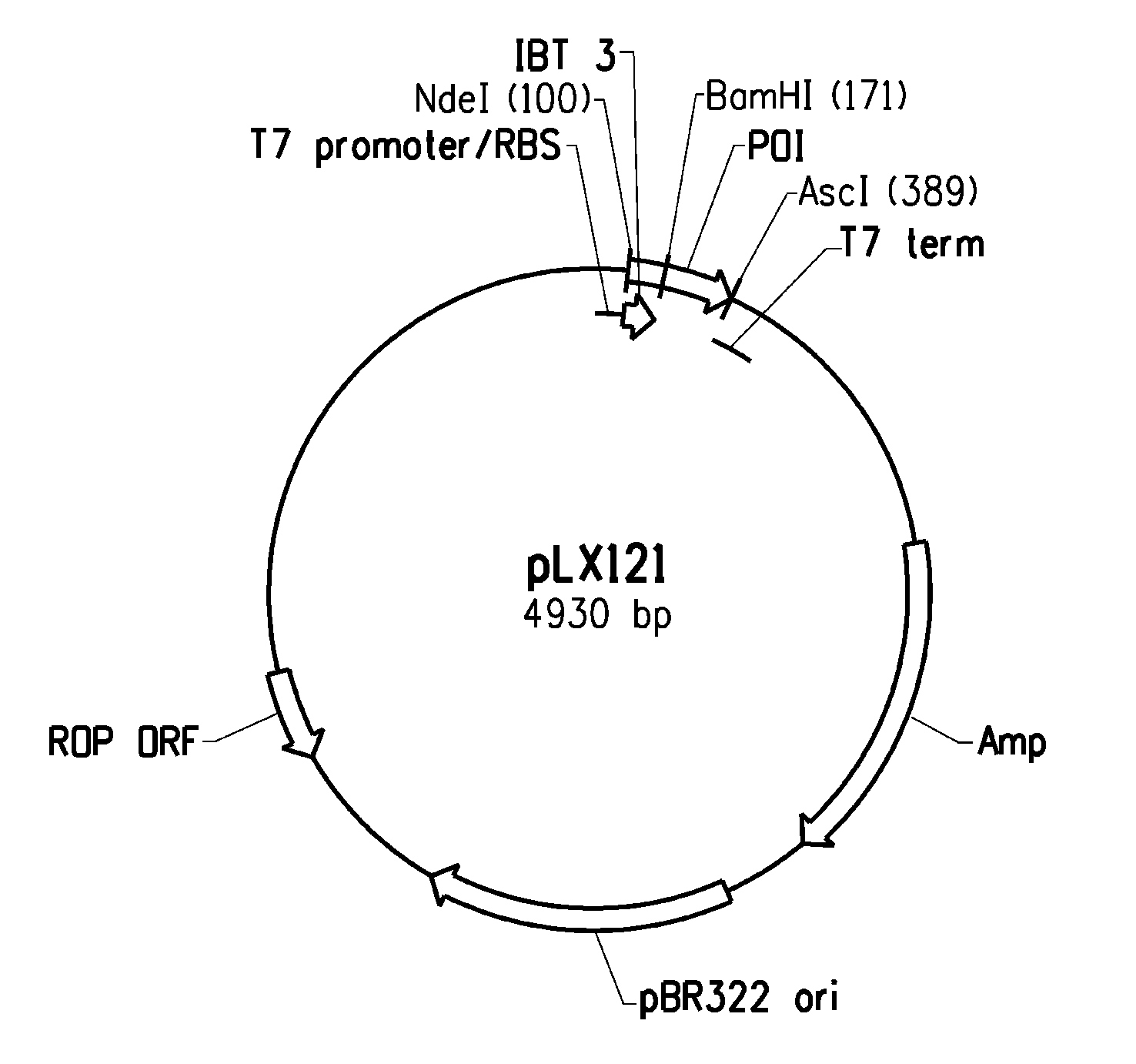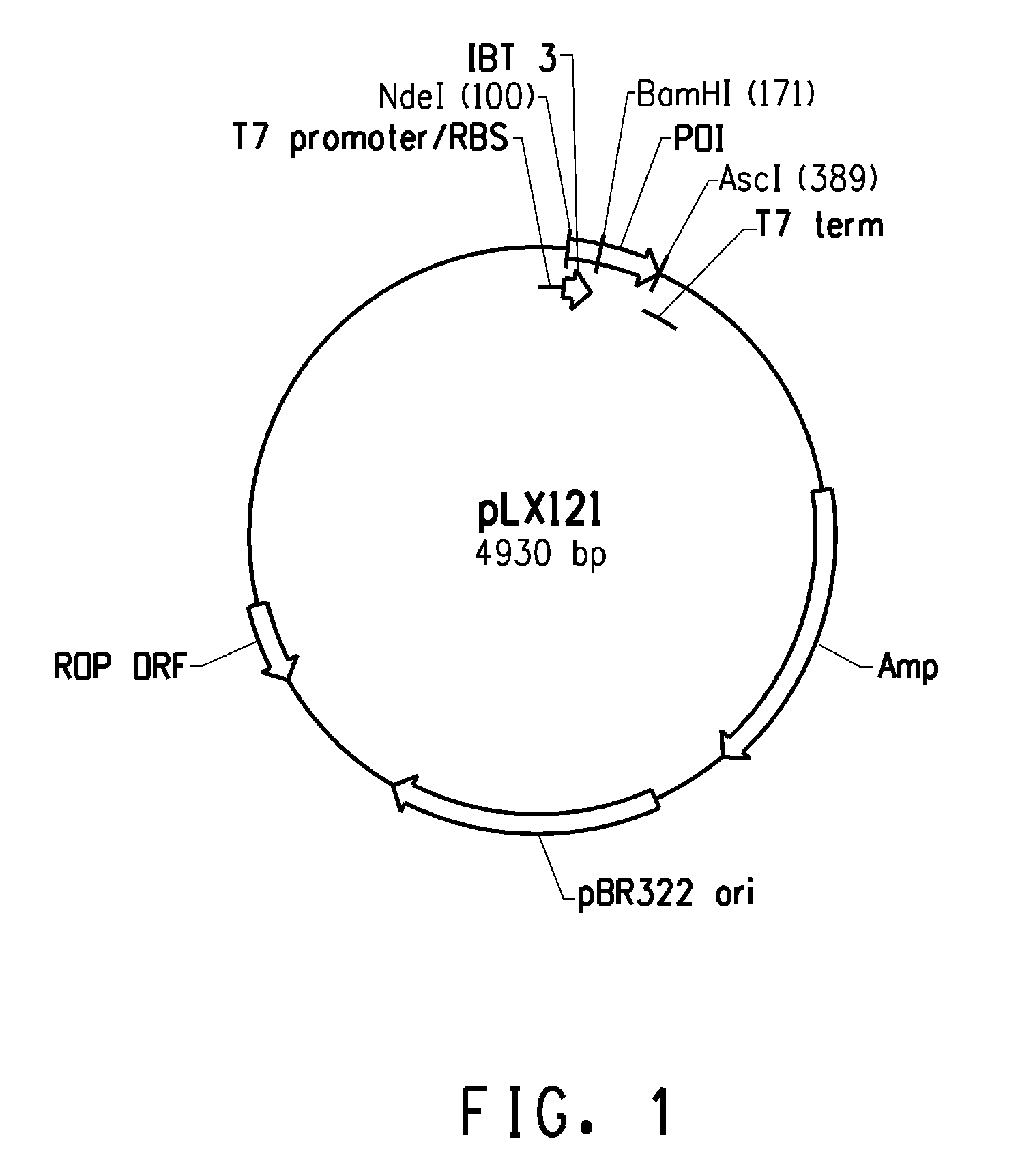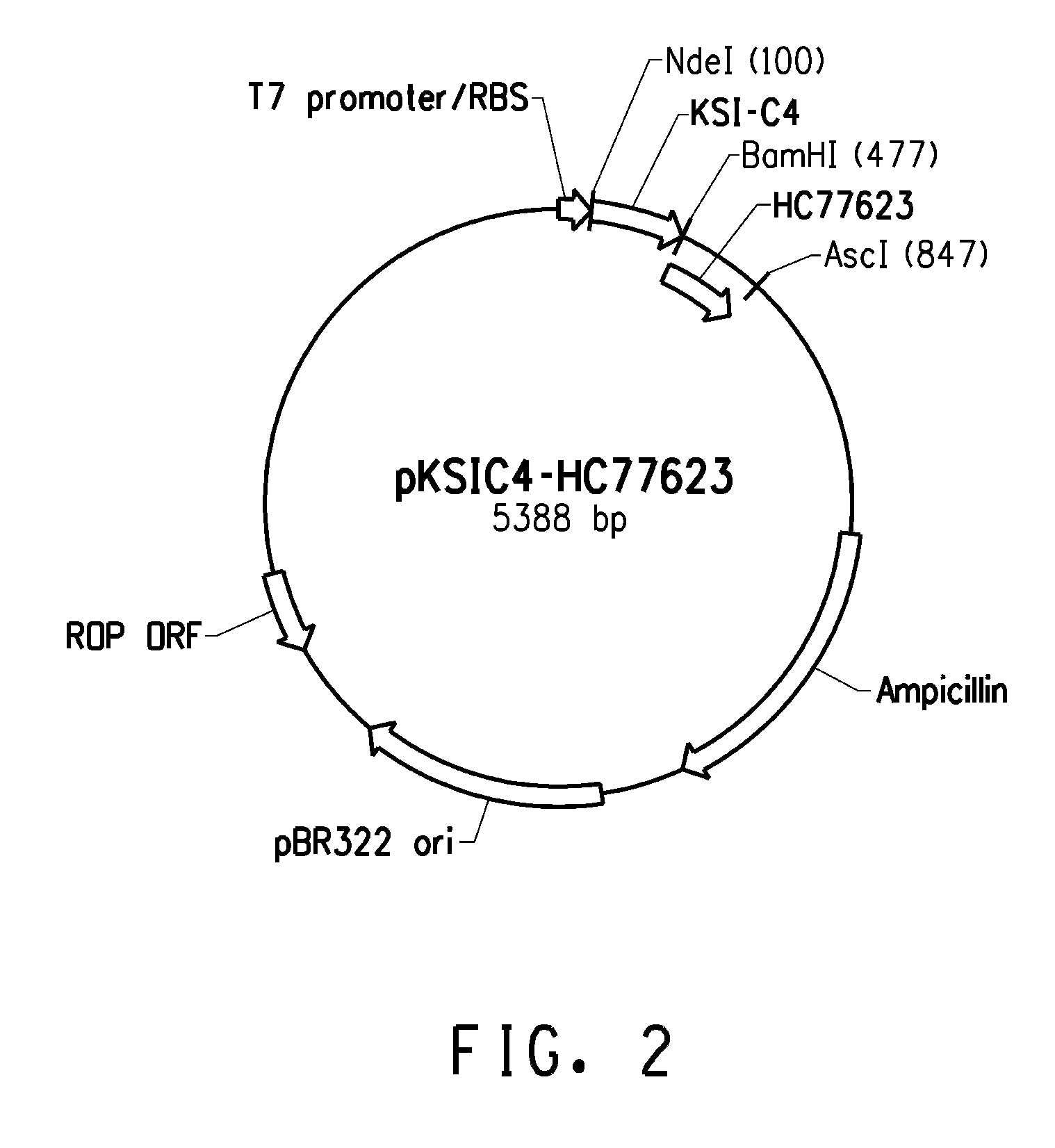Recombinant peptide production using a cross-linkable solubility tag
a solubility tag and peptide technology, applied in the field of recombinant production of fusion peptides, can solve the problems of limited production capacity, high cost of methods, and inability to bind to peptides in a cellular environment, and achieve the effect of easy separation and higher molecular weigh
- Summary
- Abstract
- Description
- Claims
- Application Information
AI Technical Summary
Benefits of technology
Problems solved by technology
Method used
Image
Examples
example 1
Construction of Expression Plasmids
[0226]Several expression systems were used to produce the fusion proteins in an E. coli host cell. One expression system was based on E. coli strain BL21-AI (Invitrogen) in combination with a T7-based expression vector (pLX121; SEQ ID NO: 1; FIG. 1, and pKSIC4-HC7723; FIG. 2; SEQ ID NO: 2) wherein expression of the T7 RNA polymerase is controlled by the araBAD promoter. The other expression system was based on E. coli MG1655 (ATCC 46076™) derived strain in combination with a pBAD-based expression vector (pLR042; FIG. 3; SEQ ID NO: 3, and pLR186; FIG. 4; SEQ ID NO: 4) wherein the endogenous chromosomal copy of the araBAD operon was deleted (the modified E. coli MG1655 strain comprising a disruption in the endogenous araBAD operon is referred to herein as E. coli strain KK2000). The 3′ region downstream and operably linked to the respective promoter in each of the vectors was designed to facilitate simple swapping of the DNA encoding the respective i...
example 2
KSI Inclusion Body Tag without an Effective Number of Cross-linkable Cysteines Cannot be Easily Separated from the Cleaved Peptide by Simple Physical Methods
[0234]The purpose of this example is to show that separation of the inclusion body tag and peptide is more difficult if the tag is not selectively cross-linked via cysteines and subsequently precipitated. In this example the peptide and IB-tag were separated using preparative HPLC.
Construct: KSI.HC77607 (SEQ ID NOs: 7 and 8; Table 2). Peptide HC77607 does have cysteine residues, however, in this example it was not used as a separation tool (Table 2). Peptide HC77607 (i.e. the peptide of interest) is comprised of several hair binding domains (bold) including KF11 (SEQ ID NO: 9) and D21′ (RTNAADHP; SEQ ID NO: 10). The acid cleavable DP moiety is italicized.
TABLE 2Components of hair binding peptide HC77607NucleicAminoacidacidPeptideAmino AcidSEQ IDSEQ IDNameFormulaSequenceNO:NO:H077607GSDP-KF11-GGG-GSDPNTSQLST1112D21′-KCGGG-KF11-GG...
example 3
An Inclusion Body Tag KSI(C4) with an Effective Number of Cross-Linkable Cysteines is Easily Separated from a Cleaved Peptide Mixture by Precipitation
[0238]The purpose of this example is to show that separation of the IBT and peptide of interest can by achieved by oxidatively cross-linking the cysteine residues within the IBT and subsequent precipitation of the tag. The peptide of interest was HC77643 (contains no cysteine residues). The remaining soluble peptide was shown to be free of the KSI(C4) tag by using HPLC.
Construct: KSI(C4).HC77643 (SEQ ID NOs: 13 and 14)
[0239]The design of peptide HC77643 is provided in Table 3 Peptide HC77643 is comprised of several hair binding domains including A09 (SEQ ID NO: 15) and KF11 (SEQ ID NO: 9) (bold). The acid cleavable DP moiety is italicized.
TABLE 3Components of Multi-blockHair-binding Peptide HC77643acidAcidPeptideAmino AcidSEQ IDSEQ IDNameFormulaSequenceNO:NO:HC77643DPG-A09-GAG-DPGIPWWNIRAPL1617A09-GGSGPGSGG-NAGAGIPWWNIRAKF11-GGG-KF11-P...
PUM
| Property | Measurement | Unit |
|---|---|---|
| Length | aaaaa | aaaaa |
| Structure | aaaaa | aaaaa |
| Solubility (mass) | aaaaa | aaaaa |
Abstract
Description
Claims
Application Information
 Login to View More
Login to View More - R&D
- Intellectual Property
- Life Sciences
- Materials
- Tech Scout
- Unparalleled Data Quality
- Higher Quality Content
- 60% Fewer Hallucinations
Browse by: Latest US Patents, China's latest patents, Technical Efficacy Thesaurus, Application Domain, Technology Topic, Popular Technical Reports.
© 2025 PatSnap. All rights reserved.Legal|Privacy policy|Modern Slavery Act Transparency Statement|Sitemap|About US| Contact US: help@patsnap.com



